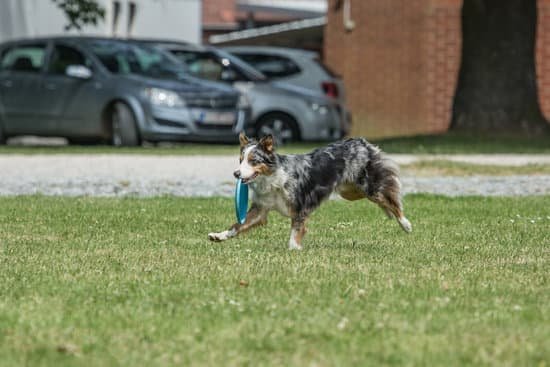Dogs bark. It’s what they do. And while most barks are simply happy greetings or expressions of excitement, sometimes dogs bark for no good reason. This can be frustrating for dog owners and their neighbors alike. If you’re struggling to get your dog to stop barking at everything, here are a few tips to help train them to be more bark-aware.
1. Start by teaching your dog the “quiet” command.
This is probably the most important step in getting your dog to stop barking at everything. The “quiet” command is simply telling your dog to be quiet, and can be taught relatively easily. When your dog starts to bark, say “quiet” in a firm voice and then give them a treat. Do this consistently, and your dog will start to associate the “quiet” command with getting a treat, which will eventually cause them to stop barking altogether.
2. Don’t give your dog attention when they’re barking.
This goes hand in hand with teaching your dog the “quiet” command. If your dog is barking for attention, the best thing you can do is to not give them any attention. This means no petting, no talking to them, and no eye contact. If you give your dog any attention when they’re barking, they’ll only learn that barking is a way to get your attention, and they’ll continue to bark incessantly.
3. Be consistent with your training.
It’s important to be consistent with your training if you want your dog to stop barking at everything. If you only train your dog to be quiet when you’re around, they’ll only learn to be quiet when you’re there. You need to be consistent with your commands and with your rewards, so that your dog knows what you expect from them at all times.
4. Get your dog some exercise.
A tired dog is a quiet dog. If your dog is getting enough exercise, they’ll be less likely to bark at everything they see. A good daily walk or trip to the park will help tire your dog out and keep them from getting bored, which can lead to excessive barking.
5. Try a bark collar.
If you’ve tried all of the above and your dog is still barking at everything, you may want to consider a bark collar. Bark collars are devices that deliver a static shock or vibration to your dog when they bark, which helps to discourage them from barking. Bark collars should only be used as a last resort, and you should always consult with your veterinarian before using one.
Dog Training To Stop Barking
There are a few things you can do to help stop your dog from barking. The first step is to determine why your dog is barking. Once you know why your dog is barking, you can start to work on stopping the behavior.
One common reason dogs bark is because they are trying to get attention. If your dog is barking for attention, you can try to ignore the behavior. If your dog is barking because he is anxious or afraid, you can try to comfort him and give him positive reinforcement when he is quiet.
You can also try training your dog to stop barking. One way to do this is to teach your dog to “speak” and “quiet” on cue. When your dog barks, say “speak” and give him a treat. When he is quiet, say “quiet” and give him a treat. Once your dog understands the commands, you can start to use them to stop the behavior.
If your dog is barking for attention, you can say “speak” and then give him a treat when he barks. If he is barking because he is anxious or afraid, you can say “quiet” and give him a treat when he is quiet.
How To Train Your Dog To Stop Counter Surfing
If you’ve ever had a dog that’s counter surfed, you know how frustrating it can be. Dogs will often jump up on kitchen counters or tables to snatch a bite of food, or even steal an entire meal. Not only is this behavior inconvenient, it can also be dangerous if your dog gets into something he shouldn’t.
Fortunately, there are a few things you can do to train your dog to stop counter surfing. The key is to be consistent and patient, and to make sure you catch your dog in the act so you can correct him.
The first step is to create a boundary for your dog. Place a sturdy kitchen gate or baby gate around the counter to keep your dog out. If your dog is still able to jump up on the counter, put a sign on the gate that says “No Dogs Allowed.” This will help to remind your dog that he is not allowed on the counter.
When you’re not around to supervise, put your dog in another room or in his crate. This will prevent him from getting into trouble while you’re not there to monitor him.
If your dog jumps up on the counter anyway, immediately say “No” in a firm voice and give him a quick correction. If he doesn’t get down, gently push him off the counter. Be sure to praise him when he obeys your commands.
If your dog is consistently jumping up on the counter, you may need to use a deterrent such as a spray bottle filled with water or a noise maker to scare him off. Be sure to only use these deterrents as a last resort, and only when you’re not able to physically correct your dog.
It may take a little time, but with patience and consistency, you can train your dog to stop counter surfing.
How To Train My Dog To Stop Begging For Food
Puppies are notorious for begging for food, and it can be a difficult habit to break. Dogs often beg for food because they are hungry, or because they want something that they cannot have. There are a few ways to train your dog to stop begging for food.
The first step is to make sure that your dog is getting enough food. Dogs that are constantly begging for food may be doing so because they are not getting enough to eat. Feed your dog at regular intervals and make sure that he has plenty of food to eat at home.
The next step is to make sure that your dog knows that he cannot have food unless you give it to him. Do not let your dog beg for food and then give him a treat. Only give your dog food when you are giving him a meal.
The last step is to train your dog not to beg for food. When your dog starts to beg, say “no” and give him a command to sit or lie down. If your dog continues to beg, you may need to put him in a time-out. Be sure to praise your dog when he does not beg for food.
How To Train Dog To Stop Sleeping In Your Bed
Dogs are known for being loyal and loving companions, but they can also be a bit of a nuisance when it comes to sleeping. Many dog owners find themselves struggling to keep their furry friend from sleeping in their bed. While it may seem cute at first, having a dog sleep in your bed can quickly become a nuisance. Not only does it take up valuable sleeping space, but it can also be difficult to get your dog to sleep in their own bed.
If you are struggling to get your dog to stop sleeping in your bed, there are a few things you can do. One of the best ways to train your dog to sleep in their own bed is to start early. Puppies are much more likely to sleep in their own bed if they are trained from a young age. If your dog is already an adult, it may be a bit more difficult to get them to switch sleeping habits, but it is not impossible.
One of the best ways to train your dog to sleep in their own bed is to make it an enjoyable experience. If your dog associates their bed with positive things, such as treats or toys, they will be more likely to sleep in it. You can also try placing your dog’s bed in a high-traffic area of the house, such as near the door or in the living room. This will encourage your dog to sleep in their bed instead of yours.
If your dog is still having trouble sleeping in their own bed, you may need to be more firm with them. Start by putting your dog’s bed in a place where they cannot see or reach your bed. If your dog still tries to get in your bed, tell them “no” in a firm voice and gently push them back to their bed. Be consistent with this routine and your dog should start to sleep in their own bed in no time.

Welcome to the blog! I am a professional dog trainer and have been working with dogs for many years. In this blog, I will be discussing various topics related to dog training, including tips, tricks, and advice. I hope you find this information helpful and informative. Thanks for reading!





